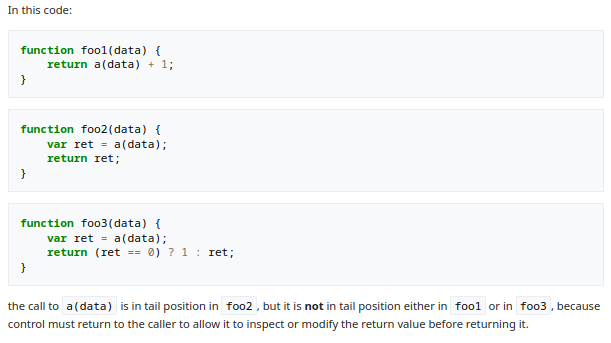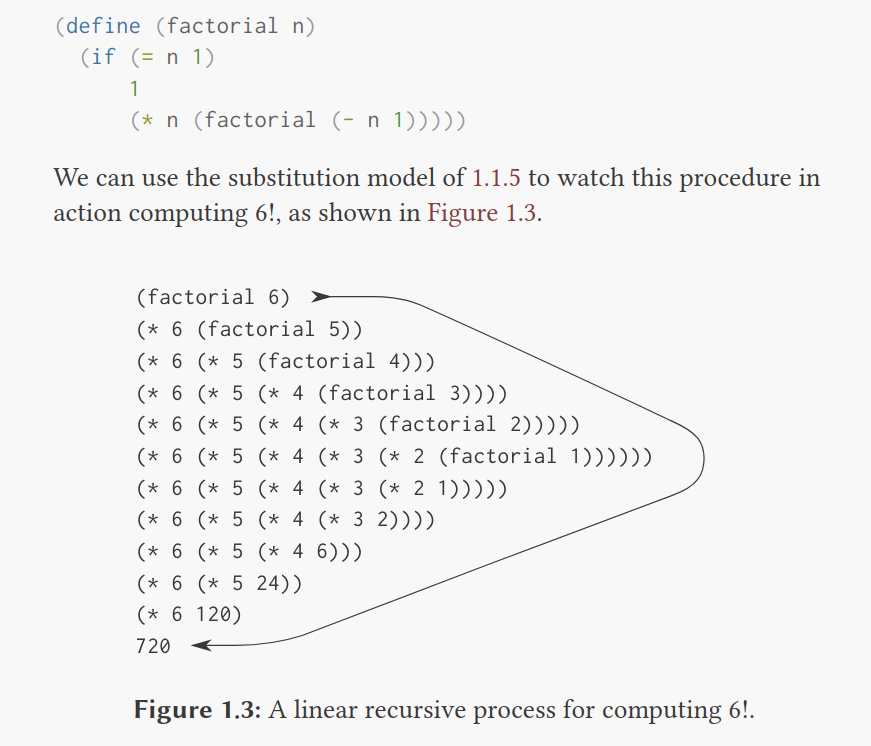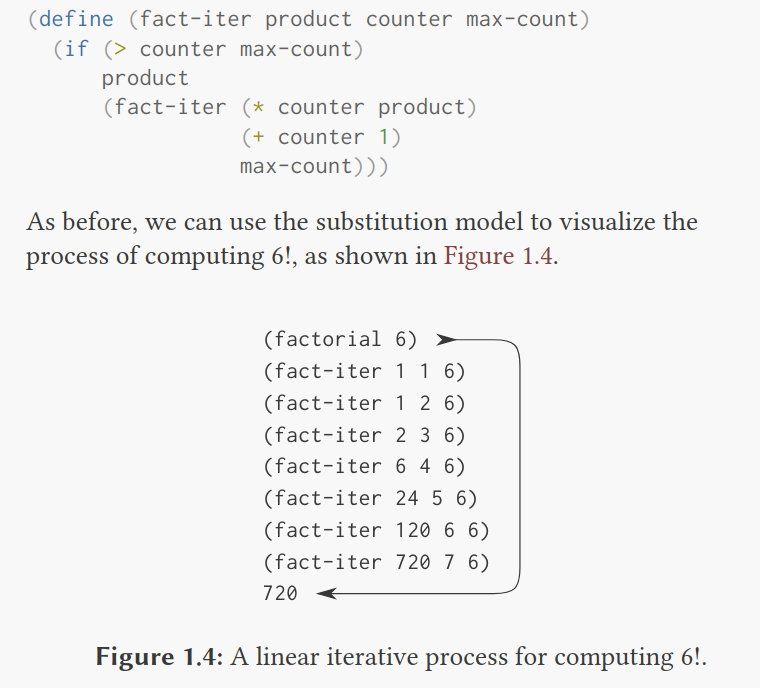tags : Functional Programming, Programming Languages, Recursion
What and Where?
- It’s a language runtime feature that certain programming languages provide.
- When a function calls another as its last action
callerreturns immediately after callingXcallerhas nothing to do after the callingXXdoes not really have to return to thecaller(we can take advantage of this)- That last call to
Xcan now be termed as atail call
- Doesn’t have to appear lexically after all other statements
- Fundamentally not related to recursion but gets used a lot w it.
- Kind of a
jumpthat passes arguments. kind ofgotodressed as acall


Proper tail calls(PTC) and Tail call Optimization(TCO)
- So we know that a
tail calldoesn’t need to return to it’s caller. So we can take advantage of it. When we take advantage of this it’s TCO(It’s an umbrella term). Some people also call it tail call elimination but that term never made lot of sense to me. - Having this optimization means, your stack never grows when it encounters a
tail call. - Some languages like Scheme require tail calls to be optimized by specification. Others may add support for it via different syntax by other means.
- Not every implementation implements PTC+TCO, some may just optimize for recursive calls, some may do something else etc.
- The Optimization:
B’s frame is replaced with the frame ofCin the same stack.// A (main func), B (caller func), C (other func) func A() func B() return C() end print(B()) // C() will directly return here if TCO end - Disadvantage: RIP stack trace, cuz those frames no longer exist.
Recursive tail calls


- Like mentioned before tail calls are not related to recursion directly, see this for a good example on using tail calls when recursion is not involved.
- A recursive function is just like any other function, so when we call the function itself in the tail call, we have
tail recursion. This may or may not be “optimized”, but general languages that support tail recursion support the optimization. - w
tail recursion+TCO, we get a couple of nice things- We get free infinite recursion! No stack overflow. So we can freely write recursive procedures in cases where we’d have to worry about stack overflow.
- We get a way to run things iteratively. Extensively used in languages without loops.
- A language supporting
tail recursion + TCOdoesn’t mean normal recursion in that language get optimized too. This is strictly only fortail calls(whatever that mean to the certain language).
Other notes
- The “remaining computation” —the addition of 1— now happens before the recursive call not after when programmer writes code for tail recursion.
- The tail-call optimization reduces the stack space requirements from linear to constant.
- i.e From
O(n)toO(1)
- i.e From
- How Tail Call Optimization Works